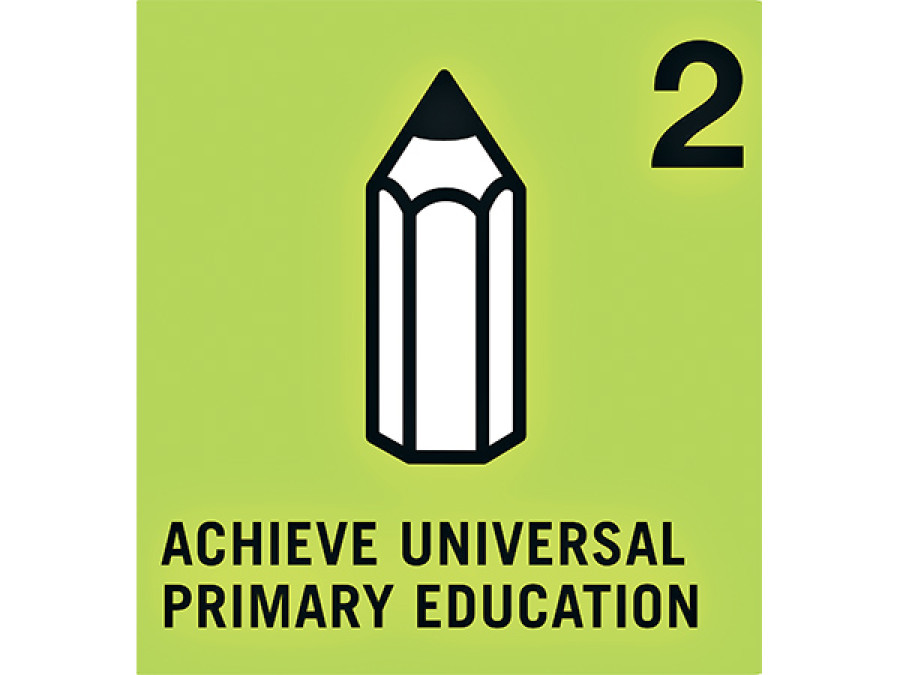Miscellaneous
Except for closing Gender disparity in schools, progress in education slow
With barley a year remaining to attain the Millennium Development Goals (MDG), the current achievement in the education sector shows that Nepal is far from meeting the targets
Development Bureau
The government in the beginning of the new millennium made a global commitment to ensure that all the children get access to primary education and eliminate gender disparity in primary and secondary education at all levels by 2015. In the same year, six specific goals were set under Education For All (EFA) programme to complement the MDGs which are rather vague. The government data, however, show that there has not been expected progress in majority of the indicators of EFA and the MDG. Despite remarkable increase in access to education, high drop-out and the repetition rates have posed challenges in attaining the target of providing universal primary education.
The Flash Report 2013/14, a biennial report of the Education Department (DoE), shows that over 40 percent students enrolled in grade one get out of school system by the time they reach grade eight, while 49.3 percent repeat the same grade, though the net enrolment has reached 95.6 percent. It also shows that hardly 76 percent students complete their basic education.
Going by the grades, the promotion rate is least in grade one, with 17.5 percent repetition and 7.1 dropout. Similarly, some 3.7 percent students get out of the school system in grade two, 3.4 percent in grade three, 3.7 percent in grade four and 4.5 percent in grade five.
According to Bishnu Karki, an education expert, the out-of-school and dropout rates are higher in the marginalised community and the Tarai districts. The National Census 2011 shows that the out-of-school children is around 11 percent among 5 to 16 age group. However, the rate is almost double in Kapilvastu, Saptari, Siraha, Parsa, Sarlahi, Dhanusha, Mahottari and Rautahat.
“From last few years, the progress in enrolment and dropout is very low which indicates that it is not going to improve unless there are specific programme for the students from such community,” Karki said.
He believes that lack of employment prospect after the completing education, poor social recognition, low quality of education and lack of environment for joyful learning are the factors that have not attracted students to the schools.
EFA also makes its mandatory to increase the access of early childhood education and care. Based on which the government has announced to setup around 70,000 Early Childhood Development Centres. However, by the current academic session, just 40 percent of the target has been met with establishment of just 29,000 centres. Similar is the case of ensuring free and compulsory education. Though free primary education is largely in practice, compulsory education is still a far cry for Nepali children.
There is a silver lining, though. The country has already achieved the gender parity in school level education. The flash report shows that the gender disparity index stands at 0.99 (100 males per 99 females) in primary, while it has already reached 1.03 in lower secondary level. Similarly, there also has been significant improvement in the target of adult literacy. According to the Ministry of Education, adult literacy rate has reached over 75 percent by fiscal year 2013/14, in accordance to the EFA target.
With the aim of increasing access to education to every section of the society and to boost the quality of education, DoE also has come up with Consolidated Equity Strategy to be implemented in the school level education from the new academic session that starts in next two months.
The strategy was formulated based on the recommendation of mid-term review of School Sector Reform Programme in 2012, which suggested for a national
strategy to make education accessible for every child by eradicating the disparity in the school level education.
The strategy is to find the children who have been deprived of education and the reason behind it. It also envisions coming up with separate programmes depending on the need.




 5.27°C Kathmandu
5.27°C Kathmandu









